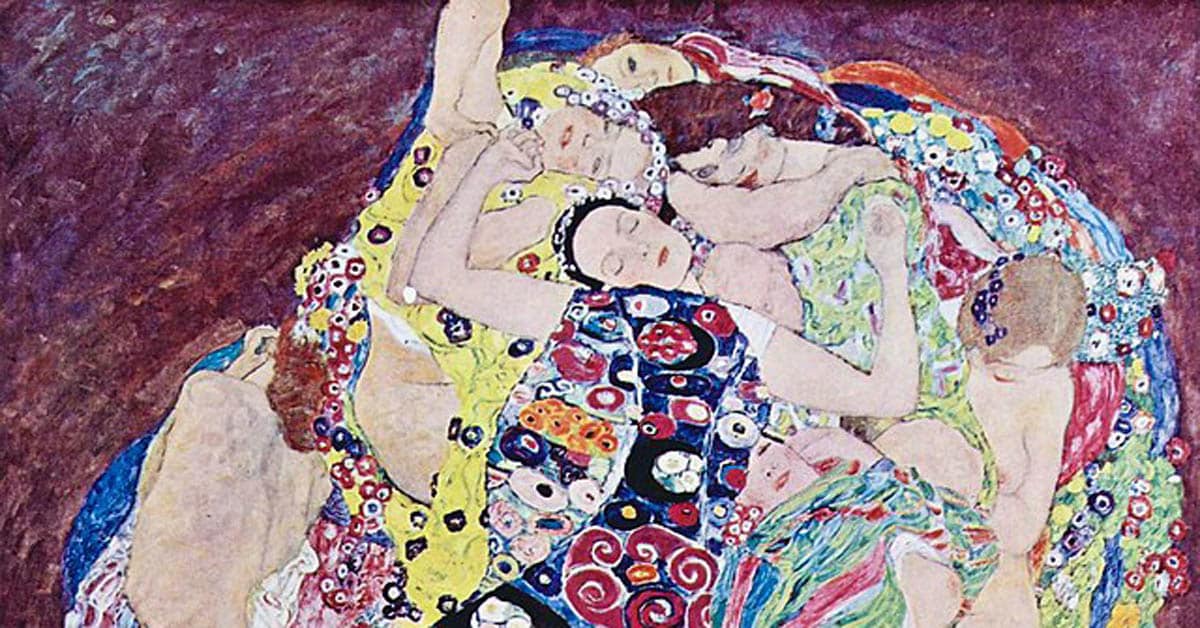Lesbism in art. Too sensual to call him by his name

Article by Magda Michalska published on the Daily Art Magazine website (United States) on May 17, 2022, freely translated by Silvia Lanzi
Having ever reflected on the presence of homosexuality in art? Today we will travel a little over time to see how art has treated the "lesbian" subject. Let's discover the history of lesbism in art. Certainly, there are not many representations of homosexuals (in art) as there are heterosexuals, since, for many centuries, the different companies have repressed it (and still today, in many countries, the same thing happens) .
However, as can probably be imagined, male homosexuality was certainly more present in art history - probably because this was dominated by men, many of whom were homosexual or bisexual. For many, female homosexuality was a mystery, a dangerous topic to explore. However, if something erotic - and lesbian - has been done, is usually from men for men ...
Before our era
The ancient Greeks were at the forefront in many aspects, including homosexuality, which for them was a natural part of life. And so were his representations in the decorative arts, such as vascular painting.

A long time later
It seems that the Middle Ages and the Renaissance have avoided the topic or have dealt with discreetly. I have not found significant works, even if it can perhaps be sensed, in many myths illustrated by Peter Paul Rubens or Titian, of the lesbian nuances.
Similar phenomena can be found in the eighteenth century; For example, we can find some delicate suggestions in Francois Boucher's idyllic paintings.
However, I will focus on very direct representations re -emerged in art during the nineteenth century, starting with my favorite rebel: Gustave Courbet. This guy loved shock - remember the origin of the world? He lived on controversy and painting two women embraced caused him, of course, several clamor: he did not allow himself to exhibit in public the picture "Le Sommeil" until 1988.

Intimate moments superior to everything
We cannot fail to talk about Henri de Toulouse-Lautrec and his prostitute studies. Lautrec, he himself as a client, was accepted by the same prostitutes as an marginalized companion. Sometimes he won and moved to a brothel for days or months. He was allowed to wander freely and sketches at his leisure, or even on commission of the edges themselves.
They grew close to his models, which also allowed him to study them in their intimate moments. He played with them, he gave them gifts, and, when they were free, accompanied them to his study, in restaurants, at the circus, and theater. Once he described the scene of two women lying together on the sofa: “He is superior to everything. Nothing can be compared to something so simple. "
A surprise from Eastern Europe
Jan Ciągliński was a Polish painter who lived and operated in the Russian empire. He was one of the first exponents of Impressionism in Russia, which can be considered rather atypical for a professor of the Academy of Fine Arts that spread academic art. However, as the paintings show, Ciągliński was a forward -looking person who could not be held by the conventions of the rigid Russian company.
Too sensual to call him with his real name
The Marquis Franz von Bayros, an Austrian artist's son of a Spanish nobleman, since his main interest was erotic art, worked with the pseudonym of Choisy Le Conin. He created illustrations for his decadent time, following the style of Aubrey Beardsley. The first "Fetish artist" was probably, and his illustrations are known for eroticism hidden in the intricate details of his production.
More controversies, please!
Some scholars stressed that erotic art can be seen as a socio-political weapon and as a culturally progressive force. In this genre, Gustav Klimt is often seen as an artist who has contributed to the emancipation of women, since they constituted his main artistic interest, and also to the rediscovery of the lost power of the erotic element given that his art and interpenetrated of Energy, so controversial for his contemporaries and critics of his time from his rather antiquated cultural costumes.

Condemn them all!
Auguste Rodin created a number of works on the theme of lesbism, which, in its time, was considered a mental disorder. Showing a sexual activity between women could serve to upset the public to underline the dangerous nature of female sexuality.
Although many of Rodin's pieces were admired when Rodin was living, this (damned NDT women) was never exposed during his life for his "brazen homoeroticism". The title was inspired by the Divine Comedy Dante, an important reference for Rodin and his contemporaries, also in terms of sexual customs.
As you have certainly noticed, all these works are of men. On this topic, there are very few quality works done by the women themselves. The most probable reason is the fact that, in general, lesbians have practically not had any possibility of expressing themselves in public. On the contrary, they were repressed, reduced to silence and deleted from the common spaces.
Original text: Lesbianism in Art?






